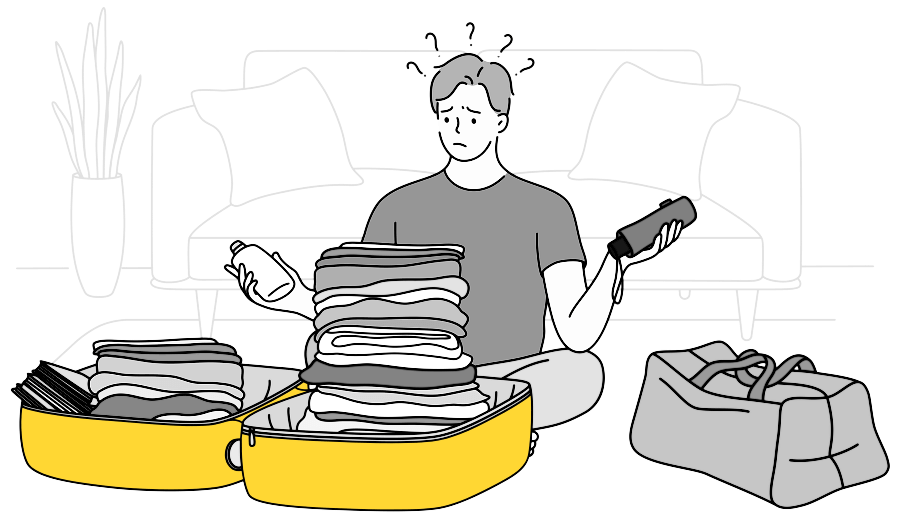It was a funny thought: Clothes are kind of like sex. You always think everyone has more than you do. Or maybe enjoys it more. Because as fun as getting dressed is (and it is for anyone in the Valet. orbit), the pleasure is not without its stress. In the age of influencers and style experts seemingly never wearing the same thing twice, that kind of personal style isn’t all that practicalâ€â€or very personal, for that matter. When you think of guys with real style, they’re guys who have a certain look, right? They’ve found what works for them and then they’ve built a wardrobe around that ideal outfit. Maybe it’s a silhouette or a color combination, but everything they pull on checks those essential boxes. Which is why they always look put together, but also like themselves.

When you step into your closet or pull out a drawer, is it overflowing with options? Are most of the items pieces that you like, but don’t necessarily wear? Then you’re ready to clean out your closet and start fresh. We’re not saying you need a whole new wardrobe. In fact, your own capsule wardrobe is likely hiding among all the clothes you’re currently not wearing. Anna Berkeley, a personal stylist who has de-cluttered the closets of everyone from fashion editors to businessmen, often recommends it as the first step to refining one’s style. The less you have, the easier it’ll be to get dressed, she promises. Ironically, you’ll discover you have more options and outfits because some of your favorite pieces will no longer be hidden.
Think about it. You’ve got your go-to pieces, right? The fail-safe options you grab when you don’t want to think about it or can’t risk not feeling great. You have a couple of worn-in favorites you’d never part with and then a whole lot of unremarkable stuff that’s not bad, but there’s something about them that keeps you from regularly wearing them. A study found that the majority of men regularly wear only 13% of their clothes. The other 87%? Well, it’s basically just hanging around until the next time you donate clothes or move. Not only that, but men actually spend more money than women do on all of those items we’re not wearing. A bunch of unworn clothes is not greatâ€â€for you, your finances or the planet.
The key is training your brain to only buy clothes that you’ll actually want to wear regularly. You don’t have to own everything you like. You can appreciate it without having to own it. If you’re not going to use or wear something, admire it from afar. Save the Instagram post, hell print it out, and make an old-school mood board, if you want. But only acquire items that you’ll get use from. Trust me, you’ll appreciate the simplicity. When I moved to Japan for six months, I couldn’t bring all my clothes. So I packed a capsule wardrobe of my favorite items. It was a game-changer. Every day, I’d open my closet and only find the greatest hits. What a gift, it felt like. And similarly, I’d only buy what I truly loved and needed because it was all going to have to get packed and flown back to America. I also realized that navy, grey and olive green are my colors. A bold red sweater looks cool, just not on me. Or at least, not enough that I’d wear it on the regular.

Of course, it’s not as easy as quitting cold turkey. The concept of â€Å�retail therapy†has legitimate roots in cognitive science. As Shakaila Forbes-Bell, the fashion psychologist and author of Big Dress Energy, told MR PORTER, researchers have proven that shopping makes us feel good because our brain reacts to novel stimuli, like a new outfit, for example, by releasing increased amounts of dopamine. â€Å�All that dopamine swishing around your body while shopping does make you happy, but it can also make you stupid.†Which is why that red sweater seems like such a good idea in the fitting roomâ€â€especially when it’s on sale. And I’ve always been a sucker for the high of instant gratification.
Her professional prescription? She calls it the four-three-two-one rule. Before buying something, ask yourself if you can see yourself wearing it four years from now. Then, imagine how you’d wear itâ€â€if you can mentally put together three outfits with some of your other favorite pieces, that’s a good way to ensure it’s got longevity in your wardrobe. Perhaps the most crucial step, take two deep breaths. Really. Flooding your brain with oxygen before making a purchase decision â€Å�will directly combat the chemical war you’re silently battling,†she says. Finally, give yourself one night’s sleep before any big purchase. In the light of a new day, you might realize that you don’t need it. After all, you already have plenty.
Read the original article here


